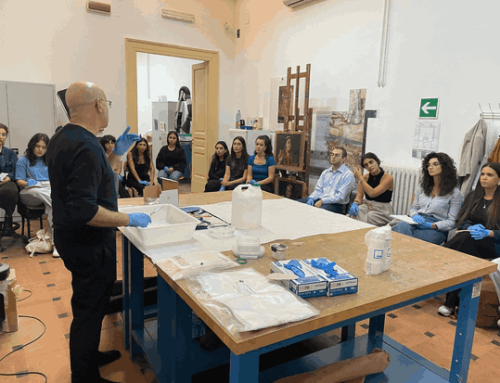05 September 2023
A new scientific article entitled “Reproducing bronze archaeological patinas through intentional burial: A comparison between short- and long-term interactions with soil” has just been published on Heliyon Journal. Heliyon is an all-science, open access journal that is part of the Cell Press family. The article, that acknowledges the work done in GREENART PROJECT, was written by the Institute for the Study of Nanostructured Materials (ISMN) of the National Research Council (CNR) in collaboration with Sapienza University of Rome and GREENART project coordinator CSGI.
Here you can find the abstract of the article:
The reproduction of archaeological corrosion patinas is a key issue for the reliable validation of conservation materials before their use on cultural objects. In this study, bronze disks were intentionally buried for 15 years in the soil of the archaeological site of Tharros, both in laboratory and in situ, with the aim of reproducing corrosion patinas typical of archaeological artifacts to be used as representative surfaces for testing novel cleaning gels. The microstructural, microchemical and mineralogical features of the patinas were analyzed by a multianalytical approach, based on optical microscopy (OM), field emission scanning electron microscopy coupled with energy dispersive spectrometry (FE-SEM-EDS) and X-ray diffraction (XRD). The patinas developed in 15 years were compared with an archaeological bronze recovered from the same site after about two thousand years of burial (referred as short-term and long-term interaction, respectively). Results revealed a similar corrosion behavior, especially in terms of chemical composition and corrosion mechanisms. XRD detected the ubiquitous presence of cuprite, copper hydroxychlorides and terrigenous minerals, while OM and FE-SEM-EDS analyses of cross-sections evidenced similar patinas’ stratigraphy, identifying decuprification as driving corrosion mechanism. However, some differences related to the type of local environment and to the time spent in soil were evidenced. In particular, patinas developed in situ are more heterogeneous and rougher, while the archaeological one is thicker and presents a major amount of cuprite, terrigenous deposits and uncommon corrosion compounds. Based on our findings, the disks buried in situ were selected and used as disposable substrates to study the cleaning effect of a novel polyvinyl alcohol (PVA)-based gel loaded with a chelating agent (Na2EDTA ⋅ 2H2O). Results show that the gel is effective in removing disfiguring degradation compounds and preserving the stable and protective patina. Based on the conservation needs, the time of application can be properly tuned. It is worth noticing that after a few minutes the green corrosion products can be selectively removed. The EDS analysis performed on the gels after cleaning reveals that they are highly selective for the removal of copper(II) compounds rather than Cu(I) oxide or Cu(0) from bronze substrates.




